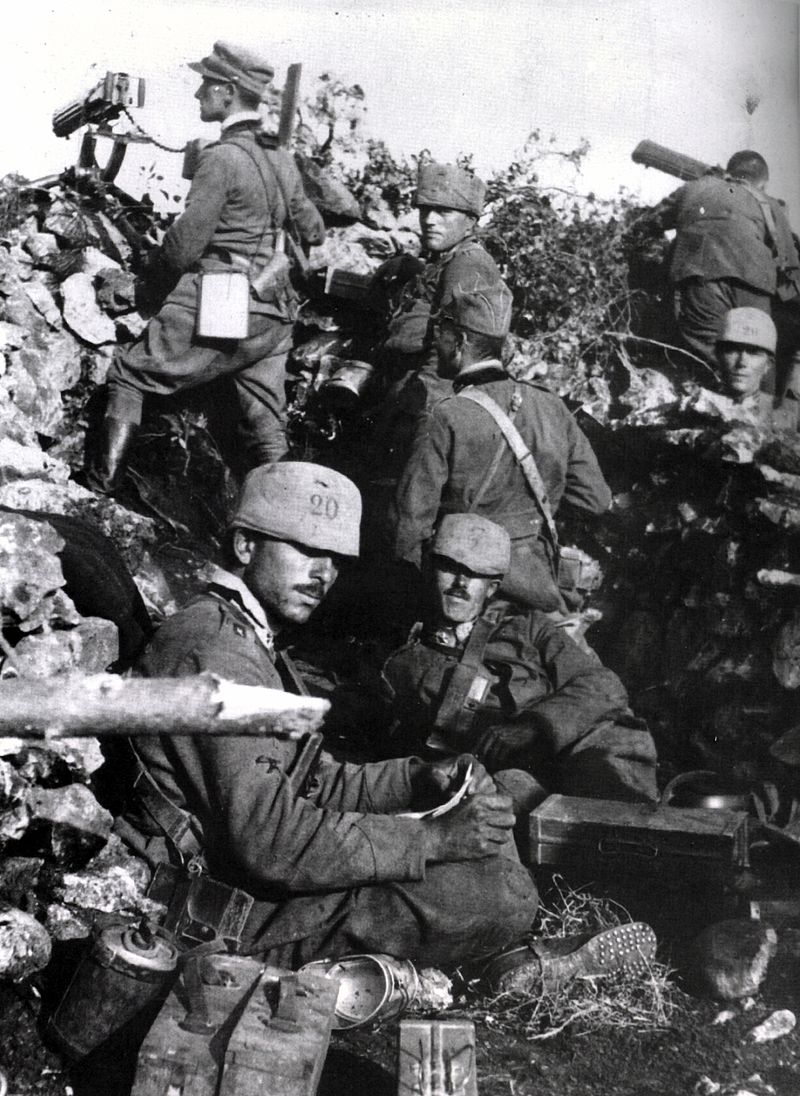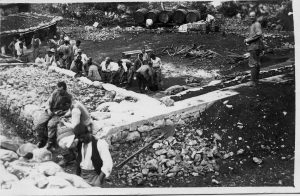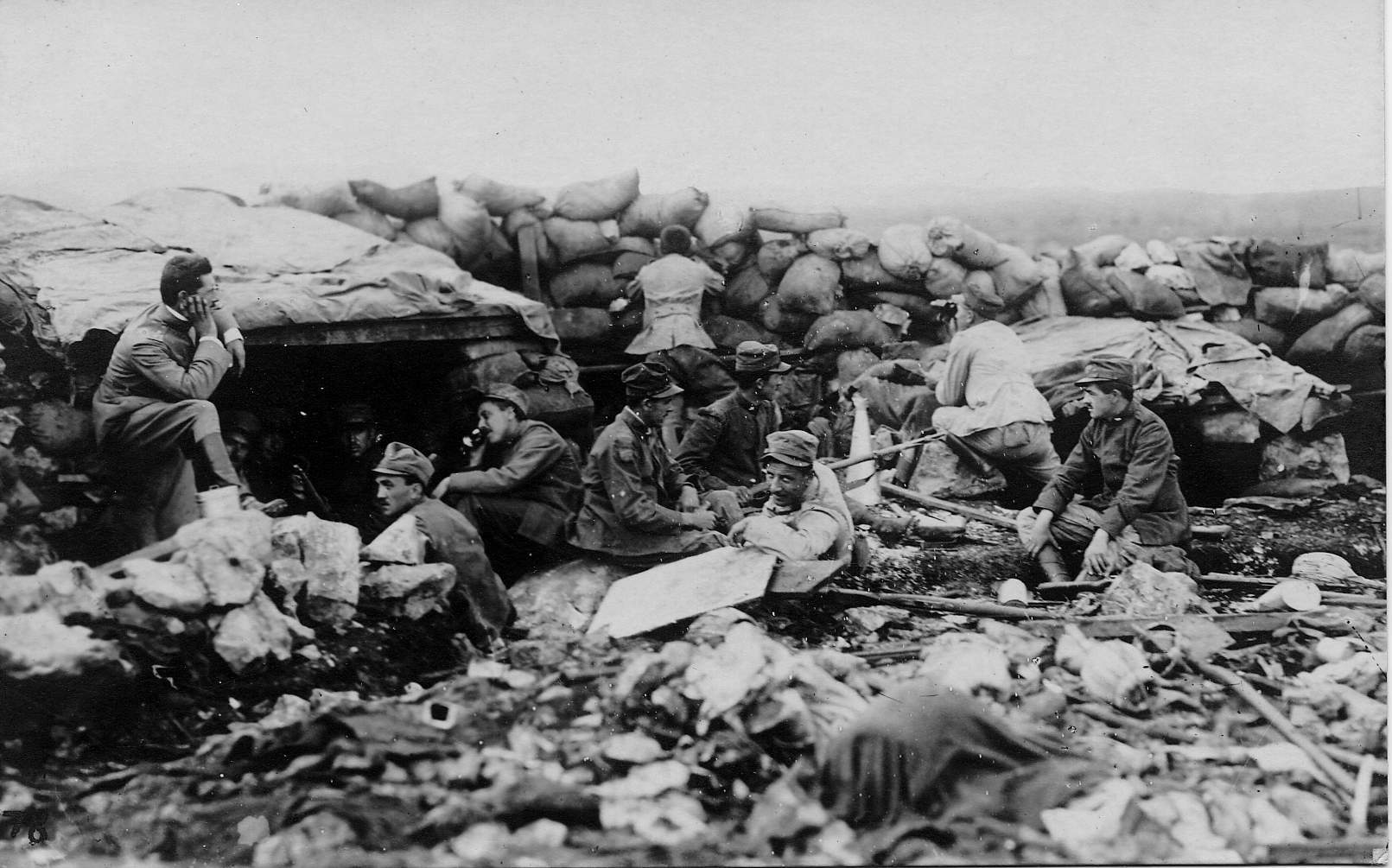I. - IV. Isonzo battle
| Site: | MOOC Charles University |
| Course: | Italian front 1915-1917 along the Isonzo river - 2021 |
| Book: | I. - IV. Isonzo battle |
| Printed by: | Guest user |
| Date: | Wednesday, 14 January 2026, 9:49 PM |
1. I. Isonzo battle
23 June 1915 - 7 July 1915
The Italian 3rd Army focused on the southern wing of the front. The Italian launch of the war against Austria-Hungary was preceded by a massive artillery preparation followed by the first attack. Especially the bridgehead near town Gorizia and the highlands of Doberdo Plateau was bombarded. On June 24, the 21st Infantry Division advanced between Sagrado and Pollazo, while the neighboring 22nd Infantry Division advanced to Vipava and Lucinico. Three divisions of Italian VI. Corps attempted to conquer the Gorizia bridgehead and two divisions of the Italian II. Army Corp tried to reach Monte Santo. The Austro-Hungarian 5th Army was almost unceasingly under the seven-day Italian artillery fire. Despite the fact that the Italian invader had double superiority, Italians suffered heavy losses and small territorial profit - the western edges of the Carso between Sagrado and the heights of the Redipuglia, Vermegliano and Selce highlands.
Source:
FUČÍK, J.: Soča (Isonzo) 1917, Prague-Litomyšl 1999.
FUČÍK, J. / PAVLÍK, M.: Sočská fronta 1915-1917, Prague 2008.
ŠEDIVÝ, I.: Češi, české země a Velká válka 1914-1918, Prague 2001.
I. Isonzo battle - Austro-Hungarian trench at the Isonzo
 Source:
Source:
1.1. Video
I. Isonzo battle
https://www.youtube.com/watch?v=v5OcyvsvsT4&list=PLB2vhKMBjSxOBRaYtCTZ_MfV1njg2lGX1&index=27&t=0s
Time:
4:30 - 7:50
2. II. Isonzo battle
18 July 1915 - 10 August 1915
It was a general Italian attack along the entire front of the Sacc. Initially, the entire Krass band was under Italian artillery, followed by the Italian 14th and 20th Infantry Divisions and the XIth. corps to attack Doberdo. "After the men's tough fights against the men, the attackers managed east of Sdraussina (Poggio) to push the Austro-Hungarian defense on a small stretch back. To the south of Vermegliana, the Italians tried to penetrate along the road to Doberd, but they were not able to conquer the heights. The attack of three Italian divisions on the gorilla bridgehead was also unsuccessful. "However, the Hungarian 20th Honvéd Infantry Division suffered great losses. On July 20, the attacker managed to seize the top of Monte San Michele, but the following day the defenders captured him back and the Italian side was pushed back to the foot. On July 25 and 26, Italians conquered some of the Krass sections, but they were unable to keep them. The battle finally culminated on July 26, when the attacker managed to conquer Austro-Hungarian position with Vermeglian and Selz, and then, due to the exhaustion and loss of both parties, the intensity of the fighting fell.
On the northern wing of the Queen's queue, the Austro-Hungarian troops were forced to retreat to the top of Prague. From July 25 to mid August, the fighting has ceased. From July 30th, the Italians attempted unsuccessfully to attack the defense points of Boroević's 5th Army.
Although the Austro-Hungarian Command tried to make additional advances on the Safed Front and regroup defense, the losses of both battles could not be compensated. The state of Italian forces was double that of Boroević's 5th Army, which now had 12 divisions and 643 major artillery. The reconstruction of the destroyed defensive positions was difficult in the hard limestone of Kras. The only positive thing that was achieved was the increase of artillery batteries by about one-quarter.
Source:
FUČÍK, J.: Na sklonku monarchie. 28. pěší pluk 1850-1918, In: „Pražské děti“, 300 let od založení 28. pěšího pluku, sborník příspěvků, Prague 1998, p. 81.
FUČÍK, J.: Soča (Isonzo) 1917, Prague-Litomyšl 1999.
FUČÍK, J. / PAVLÍK, M.: Sočská fronta 1915-1917, Prague 2008.
ŠEDIVÝ, I.: Češi, české země a Velká válka 1914-1918, Prague 2001.
II. Isonzo battle - 20th Cavalleggeri di Roma Cavalry Regiment position in the Carso

Source:
https:
2.1. Video
II. Isonzo battle
Time:
6:30 - 7:36
3. III. Isonzo battle
18 October 1915 - 4 November 1915
After three days of artillery shelling, the Italian 3rd Army attacked Monte San Michele on 13 and 14 October. For both days the peak was under the gunfire of the Italian artillery, and the day after, the infantry attacked. On October 18th, they were already fighting across the Salt Queens Zone, from Krun to the Gulf of Panzan. Initially, the Italian divisions repeatedly attacked Krn, Tolmin and Plavy, the Mrzlim litter, Kanal, the Goric bridgehead, Gorice and Montfalcone. Still, the Italians managed to achieve only small territorial gains.
The four Italian brigades attacked the Plateau of the Krass in 2 km between Monte San Michele and San Martin del Carso, where the fighting lasted until November 3. Breaking the Austro-Hungarian defense with the Italian striker failed even though he managed to penetrate it in several places. For the first time, the Italian Air Force invaded the Austro-Hungarian ground defense.
Source:
FUČÍK, J.: Soča (Isonzo) 1917, Prague-Litomyšl 1999.
FUČÍK, J. / PAVLÍK, M.: Sočská fronta 1915-1917, Prague 2008.
ŠEDIVÝ, I.: Češi, české země a Velká válka 1914-1918, Prague 2001.
III. Isonzo battle - Austro-Hungarian bridgeheads at Bovec

Source:
https://www.isonzobattlefields.com/third-battle-of-the-isonzo-18-october-3-november-1915/
3.1. Video
III. Isonzo battle
Time:
7:52 - 8:49
III. Isonzo battle - The End
Time:
3:54 - 5:14
4. IV. Isonzo battle
10 November 1915 - 11 December 1915
In regard to an adverse weather, the Struggle started only in the lowlands, especially in Gorica and in the surrounding area: Sabotin, Oslavia, Pevnica and Monte San Michele peak. Gorica became the most affected area. Taking into account that part of the city has turned into ruins. Italian troops reached the Gorica suburb, but that meant any bigger progress. They also took the Lanzuolo Bianco line and Monte Calvario peak. The Combat was ended due to the worsening weather.
Source:
FUČÍK, J.: Soča (Isonzo) 1917, Prague-Litomyšl 1999.
FUČÍK, J. / PAVLÍK, M.: Sočská fronta 1915-1917, Prague 2008.
ŠEDIVÝ, I.: Češi, české země a Velká válka 1914-1918, Prague 2001.
IV. Isonzo battle - Italian field telephone position

Source:
https://ww1live.wordpress.com/tag/fourth-battle-of-the-isonzo/
4.1. Video
IV. Isonzo battle
Time:
0:49 - 1:53